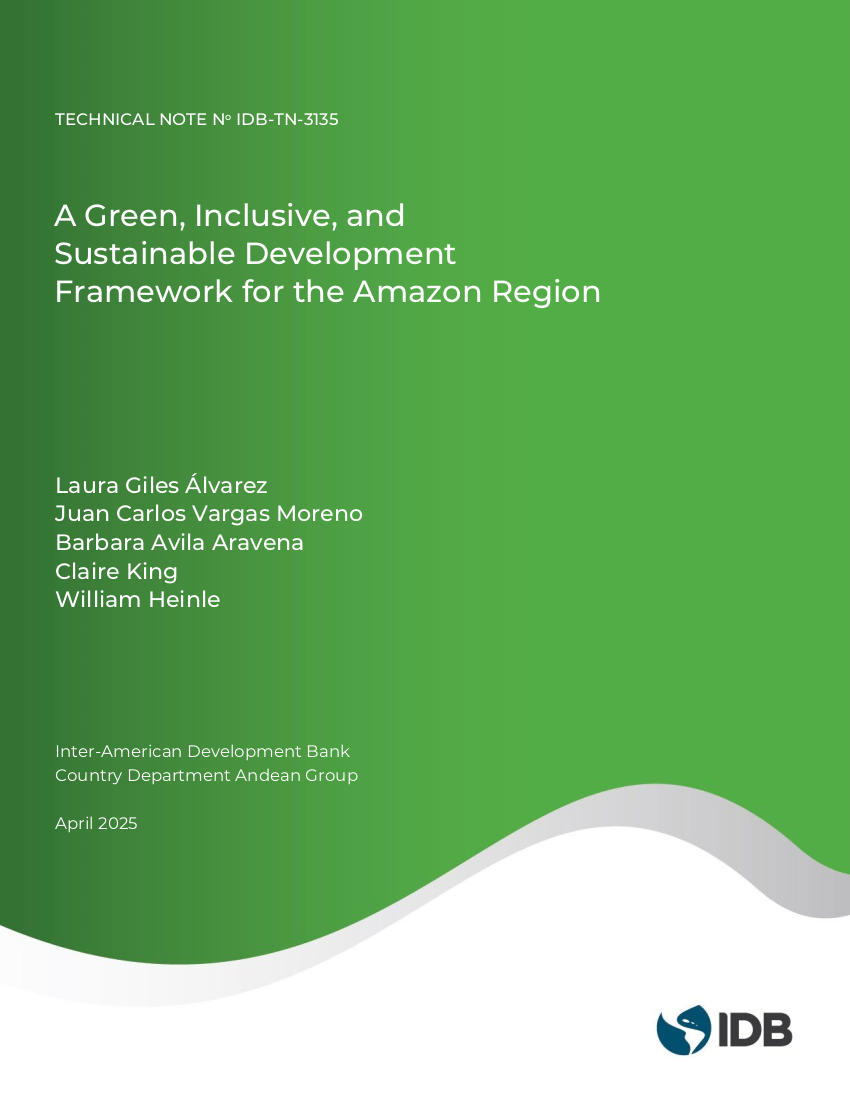A Green, Inclusive, and Sustainable Development Framework for the Amazon Region
Date issued
Apr 2025
Subject
Sustainable Development;
Sanitation Service;
Investment;
Indigenous People;
Protected Area;
Urban Area;
Health Facility;
Health;
Rural Area;
Electricity;
Environment and Natural Resource;
Rating;
Economic Development
JEL code
O13 - Agriculture • Natural Resources • Energy • Environment • Other Primary Products;
O18 - Urban, Rural, Regional, and Transportation Analysis • Housing • Infrastructure;
O19 - International Linkages to Development • Role of International Organizations;
O20 - Development Planning and Policy: General;
O44 - Environment and Growth;
O54 - Latin America • Caribbean;
R11 - Regional Economic Activity: Growth, Development, Environmental Issues, and Changes
Category
Technical Notes
This study presents the results of a development gap analysis for the Amazon Region in Bolivia, Brazil, Colombia, Ecuador, Guyana, Peru, Suriname, and Venezuela, using geospatial data and a data-drive approach. The document highlights the Amazon Region's socio-environmental complexity, emphasizing the need for development initiatives to address environmental degradation, social challenges, and limited economic opportunities. A georeferenced database to analyze development gaps and inform policy decisions is then developed and applied to study 20 sectoral gaps and 3 multisectoral gaps, covering sectors such as access to drinking water, electricity, sanitation, roads, digital connectivity, green businesses, and climate resilience amongst others. The analysis concludes that almost 6 million, 661 thousand, and 760 thousand people in the Amazon Region live in areas that are marked by severe human development, economic, and environmental challenges, respectively. Finally, the geospatial framework and database developed in this study are applied to shed light on four key policy questions relating to environmental degradation, potential for green businesses, regional integration routes, and transboundary coordination opportunities. These analyses highlight the potential use for this data-driven approach, which, complemented with territorial and qualitative analyses, can provide important insights to the work of policymakers and international organizations working in the region.
NO



